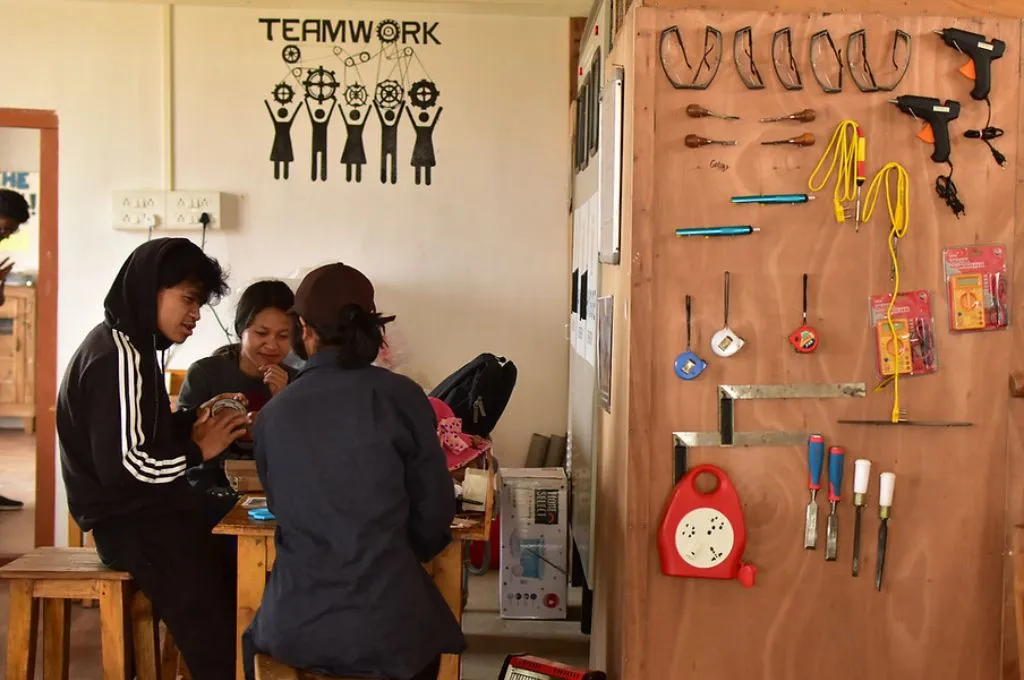“There’s many a slip ‘twixt the cup and the lip.” Nowhere is this proverb truer than in the government machinery of India that is tasked with the staggering responsibility of delivering various crucial services to the 1.3 billion inhabitants of this country.
Whether it is the police guaranteeing the security of the common citizen, the doctor attending to patients at the public health facility or the teacher imparting basic education to children in schools in remote areas, it is glaringly evident that citizens of India are being seriously short-changed in availing public services that are their inalienable right.
We in India, especially the middle class, are quick to blame the street-level bureaucracy (SLB) for faulty implementation of what we consider to be impeccably-designed policies.
Where does the truth really lie? An examination of the functioning of SLBs, covering anganwadi workers and their immediate supervisors in the Integrated Child Development Services (ICDS)*, reveals some home truths on where things are going wrong.
I. Policy vs implementation
The first unpleasant truth is that programmes as packaged in statutes and administrative regulations are not quite what the SLB implements on the ground. There are quite a few reasons for this:
Related article: IDR Explains | Frontline Health Workers
Focus on a limited set of activities
While the ICDS manual prescribes several duties for the anganwadi worker, the ICDS machinery focuses only on supplementary nutrition provision to mothers and children. It excludes activities such as monitoring the growth of children, counselling of caregivers on health and nutrition, and early childhood education.
Programmes as packaged in statutes are not quite what the street level bureaucracy implements on the ground.
Food supply is the only concern of the officials of ICDS directorates and the departments at the state level. As a result, the anganwadi worker is considered to have done her duty if she has distributed take home rations (THR) to mothers and children aged under three, and handled cooked meals for children in the 3-6 age group.
Emphasis on paperwork versus outcomes
The anganwadi worker is also required to complete a huge load of paperwork on the supply of food and on the nutrition status of children, to be sent to her superiors every month. If these duties are completed and reports sent to the state and central governments regularly, there is no accountability for outcomes. For example, the nutrition status of children—as revealed by their height and weight measurements, which are critical for determining and addressing stunting and wasting in children below five years—is never addressed in a systematic manner.
II. Leakage in programme implementation
The second shocking fact lies in the subversion of the supplementary nutrition programme by the contractor-politician-bureaucrat nexus. An average Indian state has around 75 lakh children aged below six. With a provision of supplementary nutrition at a rate of INR 6 per day to each child, the annual bill works out to approximately INR 1,350 crore. This huge budget lends itself to manipulation by vested interests.
This huge budget lends itself to manipulation by vested interests.
A recent LANSA study documents the systematic siphoning of public money in Uttar Pradesh through this programme. While a few packets of the THR (daliya) are distributed to families, the bulk of the supplies are sold as cattle feed, giving additional illegal income to the anganwadi worker. Silence is bought through the complicity of all those who are part of the supply chain.
The situation is not much better in respect of hot, cooked meals, where the proceeds of funds received (even if irregularly) are distributed among all stakeholders, including the anganwadi worker and the ICDS supervisor, with very little reaching children in the form of improved nutrition.
III. Socio-cultural barriers
Traditional social prejudices and behavioural patterns also adversely impact the messages being understood and acted upon. Two examples come to mind. Promoting early breastfeeding within an hour of birth has been recommended for a variety of reasons. However, social practices have often militated against this, with the belief that the child must be fed specific fluids before breastfeeding is initiated.
In the area of sanitation, proper hygiene practices and the absence of open defecation are known to promote the healthy growth of children. A recent study by Diane Coffey and Dean Spears has attributed the failure in restricting open defecation in India to social and cultural forces unique to the country. These are centred around religious practices of purity and pollution and the consequent reluctance to locate toilets in proximity to the house.
While these instances reflect the demand factor impacting the efficacy of public services, there are also supply aspects that affect client response to public services.
IV. Inadequate infrastructure
Irregularly functioning Primary Health Centres, which are often closed when the citizen has spent time and money to make her way there, act as a disincentive to use public health facilities. The problem is compounded when the health provider behaves indifferently, and/or demands illegal payments. Such experiences discourage citizens from using the facility and force many to shift to private doctors, sometimes of very dubious quality.
What is being done to address this?
India’s policy mandarins are frustrated by this lack of success at translating significant budgetary allocations and governmental effort into improved outcomes in different social sectors. They are, thus, increasingly seduced by direct cash transfers to clients and privatisation of health, education and corrective services.
However, this approach still begs the question: are citizens guaranteed access to improved services? There will still be need for regulatory agencies that monitor how private agencies function, including the quality and pricing of their services. Poor governance in direct management of public service delivery systems can easily transfer to equally poor oversight of private providers.
Take the case of the Universal Basic Income (UBI), which has caught the fancy of academics and policymakers in India. Apart from the vital issue of who will be entitled to UBI, and its fiscal implications, the question of fair and equal access to services critical to human health and development is still a moot point.
Is there a solution?
The few short-lived successes in child nutrition programmes in certain states have been the result of inspiring bureaucratic leadership, backed by political commitment. Unfortunately, results show only as long as the bureaucratic champion is around.
But long-term success in reducing key indicators of malnutrition, such as stunting and wasting, require sustained efforts to put in place functional systems that can operate irrespective of personalities and governments. These include:
- Evidence-based, nutrition-specific and nutrition-sensitive interventions, backed by committed government budgets and active participation of different government departments and agencies.
- Health and nutrition protocols that are scrupulously followed, with rigorous monitoring of child nutrition outcomes to ensure accountability.
- Empowering local governments and frontline workers and supervisors with financial and administrative authority to deliver meaningful outcomes.
Above all, the political and bureaucratic leadership in the various states must provide a conducive and supportive environment for the effective functioning of SLBs, something that has been sorely lacking till now.
*ICDS is the largest programme in the world devoted to the care of pregnant and nursing mothers and children under 6 years of age.







